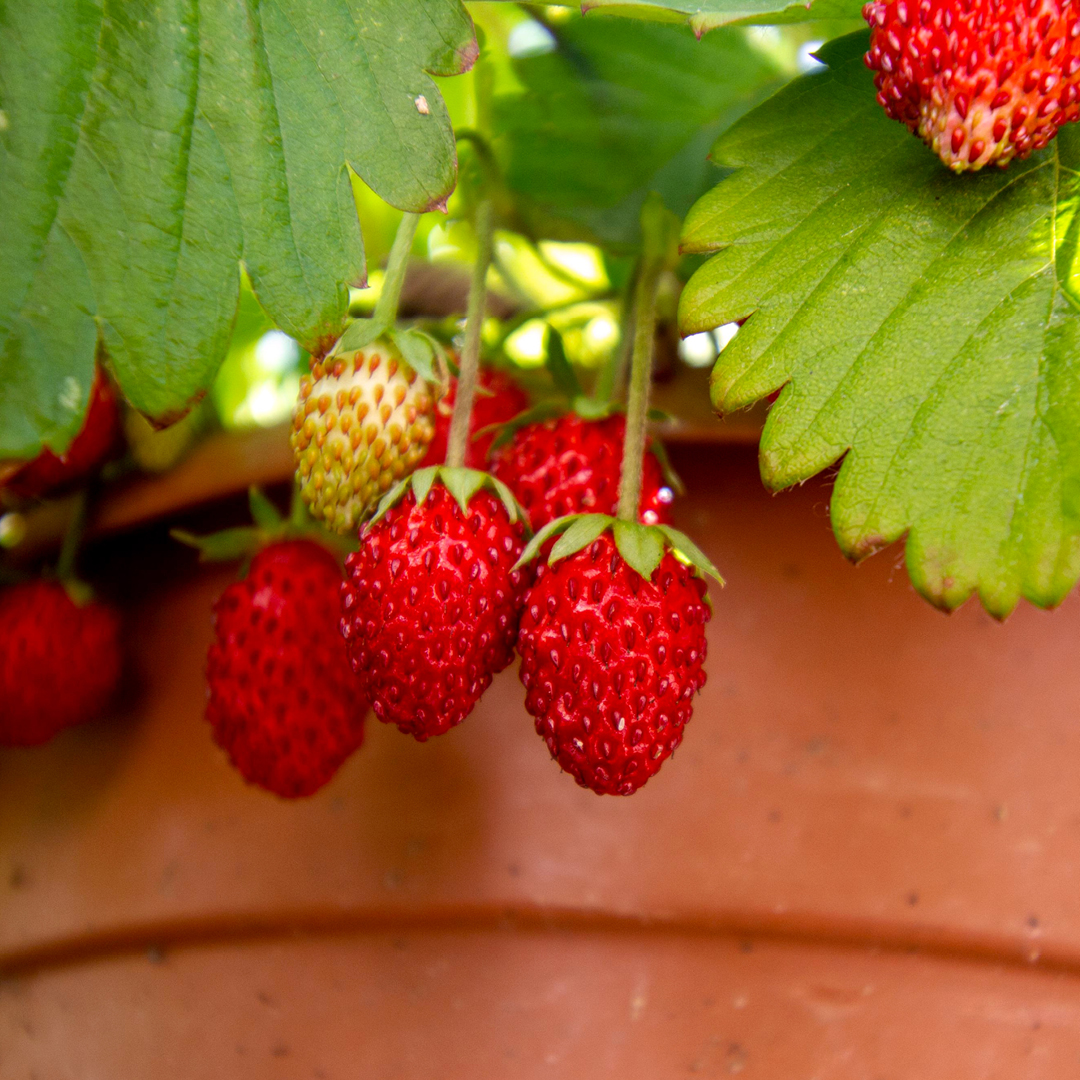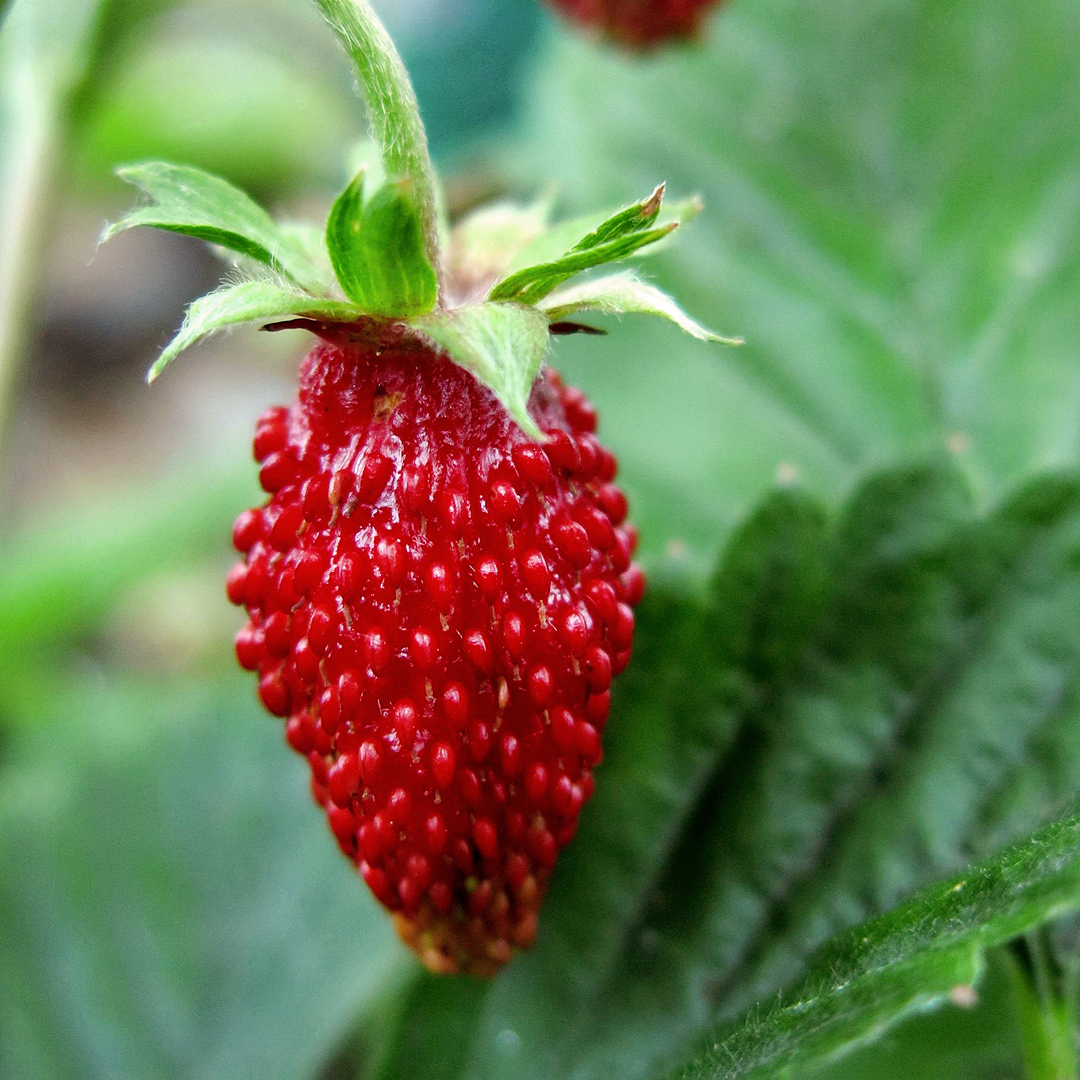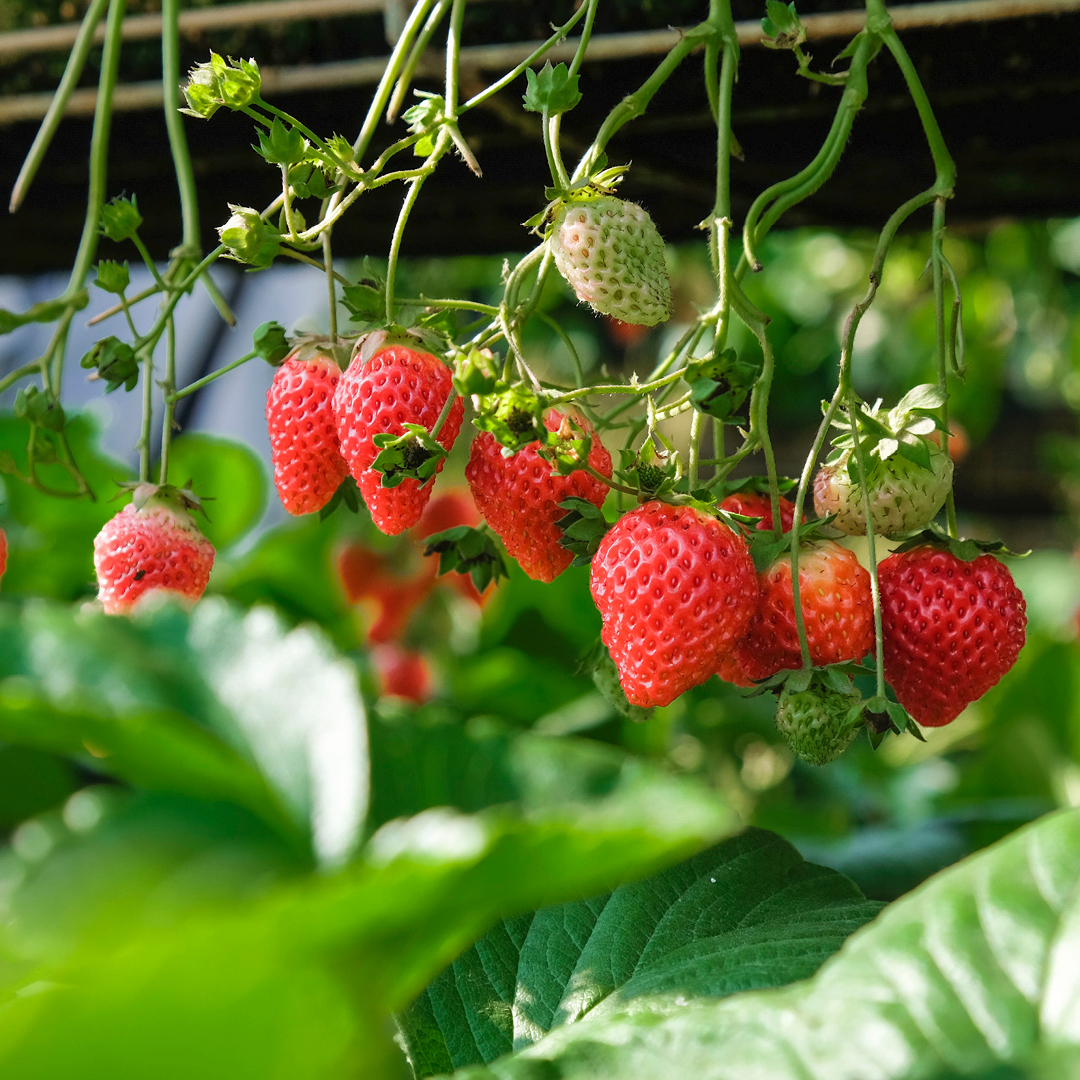Do you grow strawberries? Ripe, sweet, juicy strawberries are the number one favorite fruit in the US and are definitely worth the garden space. However, if you have a small or limited growing space, raising strawberries in hanging baskets offers a creative and space-saving solution while adding a decorative touch to outdoor areas.
Benefits of Growing in Hanging Baskets
- Space Efficiency: Hanging baskets utilize vertical space, making them ideal for small gardens, balconies, and such.
- Ability to Relocate: If an unforeseen deep frost or a scorching day arrives, hanging baskets may easily be temporarily relocated to a frost-free or cooler location.
- Pest Management: Elevating strawberries can help deter pests like slugs and snails, reducing the risk of plant damage.
- Improved Air Circulation: Hanging baskets allow for better airflow around the plants, which can help prevent diseases such as mildew.
- Increased Water Drainage: Water drains quickly and easily from most hanging baskets, helping to prevent root rot.
- Easy Access: Harvesting strawberries from hanging baskets is convenient and doesn’t require bending or stooping, making it suitable for gardeners of all ages and abilities.
- Aesthetic Appeal: Hanging baskets add visual interest to your garden or outdoor space, providing a beautiful display of cascading foliage and ripe berries.
Selecting the Right Varieties
Choose strawberry varieties that are well-suited for container gardening, such as Alpine, Day-neutral, and Everbearing. Alpine types do not produce runners, while Day-neutral and Everbearing types produce few runners, thus putting their energy into increased fruit production. It is best to avoid June-bearing types when planting in hanging baskets, as they produce excessive runners at the expense of fruit production. Also, consider factors like flavor, size, and yield when selecting varieties.
Alpine
Alpine strawberries are delightful little fruits that pack a punch of flavor despite their small size. What sets Alpine strawberries apart is their intense sweetness and aromatic fragrance. They typically have a more concentrated flavor compared to their larger counterparts, making them a favorite among gardeners and fruit lovers.
These plants are also known for their ability to produce fruit continuously throughout the growing season, ensuring a steady supply of delicious berries for eager growers.
Here are three popular varieties of alpine strawberries that thrive in hanging baskets:
- Alexandria
This variety is prized for its sweet, aromatic berries and vigorous growth habit. ‘Alexandria’ produces an abundant yield of small, deep red fruits that pack a punch of flavor. They have a lovely trailing nature, which creates an attractive cascade of foliage and fruit. With proper care, ‘Alexandria’ plants can produce fruit continuously throughout the growing season, providing a steady supply of delicious strawberries for snacking or culinary use. - Mignonette
Renowned for its intense strawberry flavor, ‘Mignonette’ Alpine strawberries are a favorite among gardeners. These petite, ruby-red berries boast a rich, complex taste reminiscent of wild strawberries, making them a delightful addition to desserts or salads or enjoyed fresh off the vine. - Ruegen
With its vigorous growth and prolific fruit production, ‘Ruegen’ Alpine strawberries are a popular choice for hanging baskets. This variety produces medium-sized, bright red berries with a sweet, tangy flavor that is simply irresistible. ‘Ruegen’ plants feature cascading stems adorned with delicate foliage and clusters of berries, creating a picturesque display in hanging baskets.
Everbearing & Day-neutral
Everbearing strawberries typically produce two to three harvests of fruit each year: one in late spring to early summer, another in midsummer, and sometimes a third in early fall. They initiate flower buds in response to day length, meaning they typically produce their main crop in the spring and a smaller crop later in the season. After the initial flush of fruit, everbearing varieties may produce sporadic berries throughout the summer and into the fall. However, their fruiting is influenced by day length, so they may slow down or stop producing during the hottest months of summer.
On the other hand, Day-neutral strawberries are less dependent than Everbearing strawberries on day length for flowering and fruiting. Instead, they produce fruit consistently throughout the growing season, regardless of day length. Day-neutral varieties initiate flower buds based on temperature rather than day length, allowing them to flower and fruit continuously as long as temperatures remain within their preferred range. This makes them ideal for regions with mild climates where temperatures stay relatively consistent throughout the year. Day-neutral strawberries typically produce smaller harvests of fruit compared to everbearing varieties but over a longer period of time.
Here are our favorite everbearing and day-neutral strawberry varieties popular for growing in hanging baskets:
- Seascape
‘Seascape’ strawberries are prized for their exceptional flavor, firm texture, high yields, and compact size, making them a top choice for hanging basket growth. These berries boast a perfect balance of sweetness and acidity, making them excellent for fresh eating, preserves, or adding to desserts. - Tristar
Loved for its robust flavor and reliable performance, ‘Tristar’ strawberries are known for their intense sweetness and juicy texture, making them a delightful addition to salads and desserts or enjoyed fresh off the vine. ‘Tristar’ plants are compact and produce abundant fruit throughout the growing season, making them well-suited for small-space gardening and hanging baskets. - Evie-2
‘Evie-2’ strawberries are esteemed for their large, flavorful berries and vigorous growth habit. These berries are known for their sweet, juicy flavor and firm texture, making them perfect for eating fresh, baking, or preserving. ‘Evie-2’ plants are compact and produce fruit prolifically throughout the season. - Albion
‘Albion’ strawberries are known for their large, firm berries and high yields. They have a deliciously sweet flavor and are resistant to several common strawberry diseases. Their compact, runnerless growth makes them an excellent choice for hanging baskets where space is limited. - Quinalt
‘Quinalt’ strawberries are another everbearing variety that produces medium-sized berries with a sweet, juicy flavor. ‘Quinalt’ strawberries are also known for their high tolerance to heat, making them a great choice for growing in containers during the summer months.
Each of these strawberry varieties offers something unique, whether it’s compact growth, continuous fruiting, disease resistance, or ornamental appeal, making them excellent choices for growing in hanging baskets.
Hanging Basket
Harvest View Greeenhouse offers a fantastic assortment of hanging baskets. When making your selections:
- Opt for hanging baskets with sufficient drainage to prevent waterlogging.
- Select a hanging basket large enough to hold your strawberry plant(s).
- Ensure the basket is sturdy enough to support the weight of the soil and plants once they’re fully grown.
- Choose a hanging basket color and style that goes well with your house.
Soil Mix
- Use a well-draining potting mix rich in organic matter.
- If needed, incorporate perlite or vermiculite to improve aeration and drainage.
- Consider adding slow-release fertilizer or compost for long-term nutrient availability.
Planting
- Fill the hanging basket with the prepared soil mix, leaving enough space for the strawberry plants.
- Gently remove the strawberry plants from their pots and carefully separate any tangled roots.
- Plant the strawberries in the basket, ensuring the crown (where the roots meet the stem) sits just above the soil level.
- Space the plants evenly to allow for proper growth and airflow.
Watering and Care
- Provide adequate sunlight exposure, aiming for at least 6-8 hours of direct sunlight per day.
- Water the strawberries regularly, keeping the soil consistently moist but not sopping wet.
- Mulch the surface of the soil to help retain moisture.
Maintenance and Harvesting
- Remove any runners (long stems that produce new plants) to encourage the development of larger berries.
- Fertilize the plants every 4-6 weeks with a balanced liquid fertilizer, following the manufacturer’s instructions.
- Harvest ripe strawberries as they become ready, typically when they reach a deep, vibrant color and are firm to the touch.
Growing strawberries in hanging baskets makes cultivation and harvesting a cinch. Gardeners can enjoy fresh, flavorful berries while maximizing limited space. Why not give it a try this spring?


